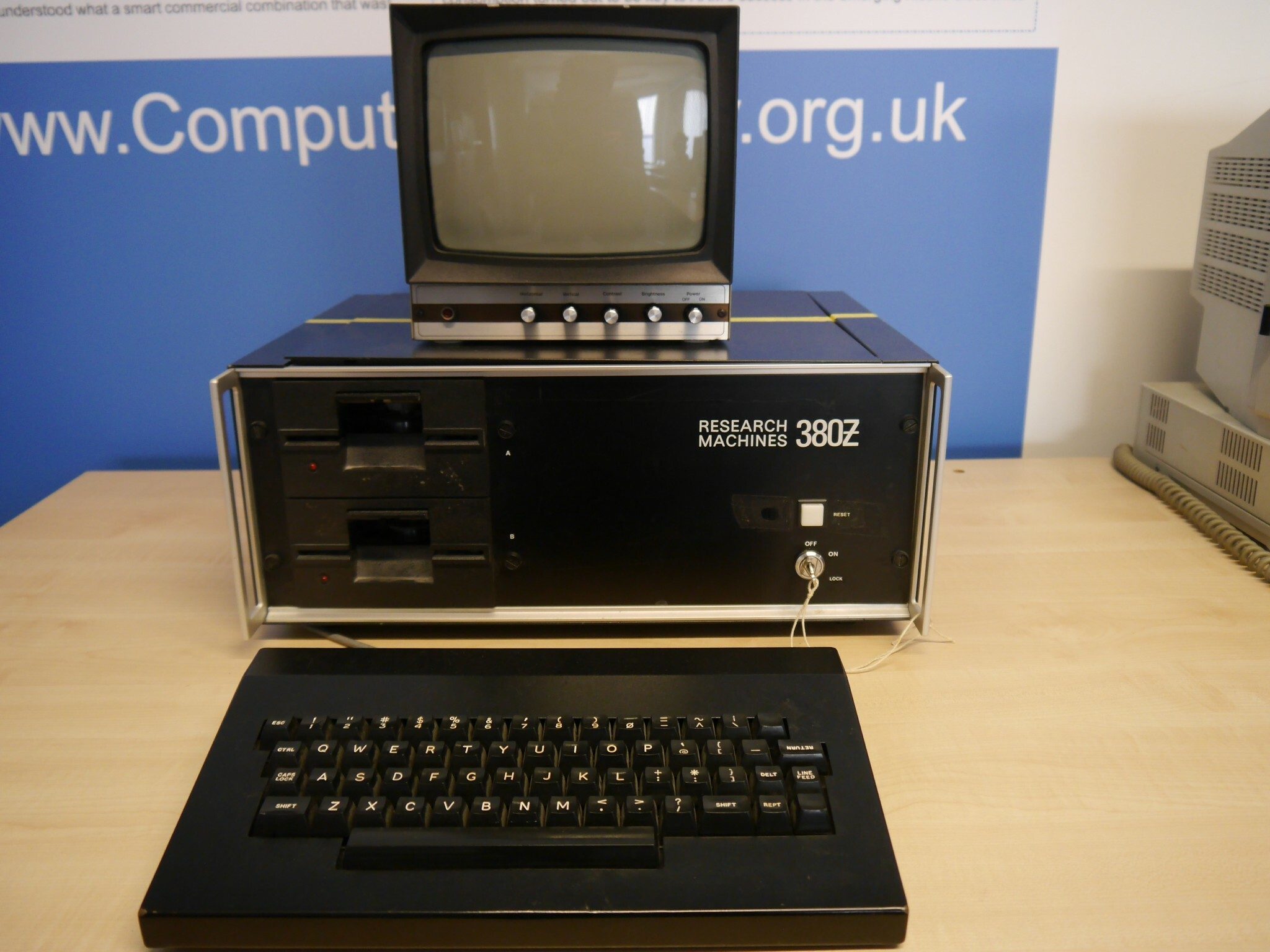
In about 1978, when I was probably 13, my school got its first computer, a Research Machines 380Z—a British-made Zilog Z80-based machine. It was similar to the one in the picture above (from Centre for Computing History), but connected to an old black-and-white TV rather than a monitor, and with a cassette tape recorder, instead of twin floppy disk drives, for I/O.
You could program it in (Research Machines) BASIC and book it for an hour after school, from 3.45pm. I'd read a book on BASIC so was fully dangerous.
At 3.46pm I typed in my program:
110 PRINT "HELLO, NICK!"
220 GOTO 10
at 3.47pm I typed RUN, and it ran:
HELLO, NICK!
HELLO, NICK!
HELLO, NICK!
.
.
.
And at 3.48pm I realised I didn't know how to stop it. So I turned the system off and on again. And it said something like:
COS 2.3>
meaning that only the Cassette Operating System (COS) remained and I needed to reload BASIC from cassette. But I didn't how to do that either. So at 3.49pm, I turned it off again and went home.
The following day, I learnt about the control key and the importance
of CTRL-C; and of not starting something you don't know how to stop.
Those are lessons you don't forget.